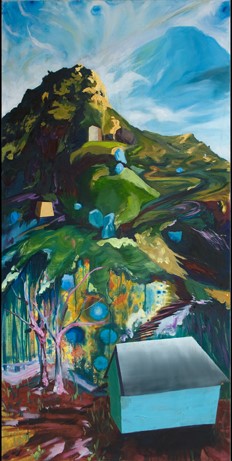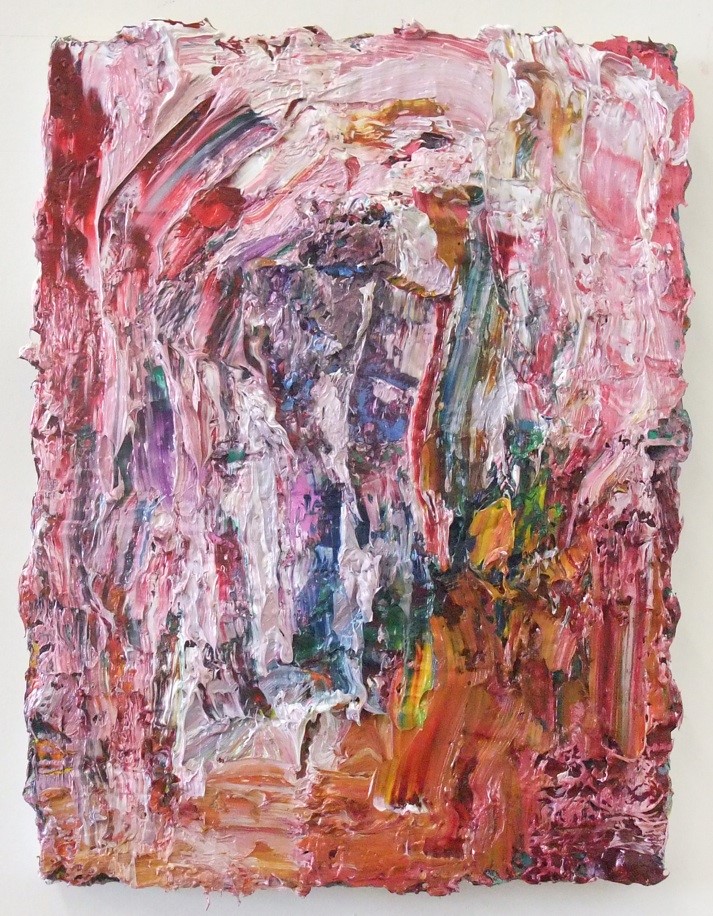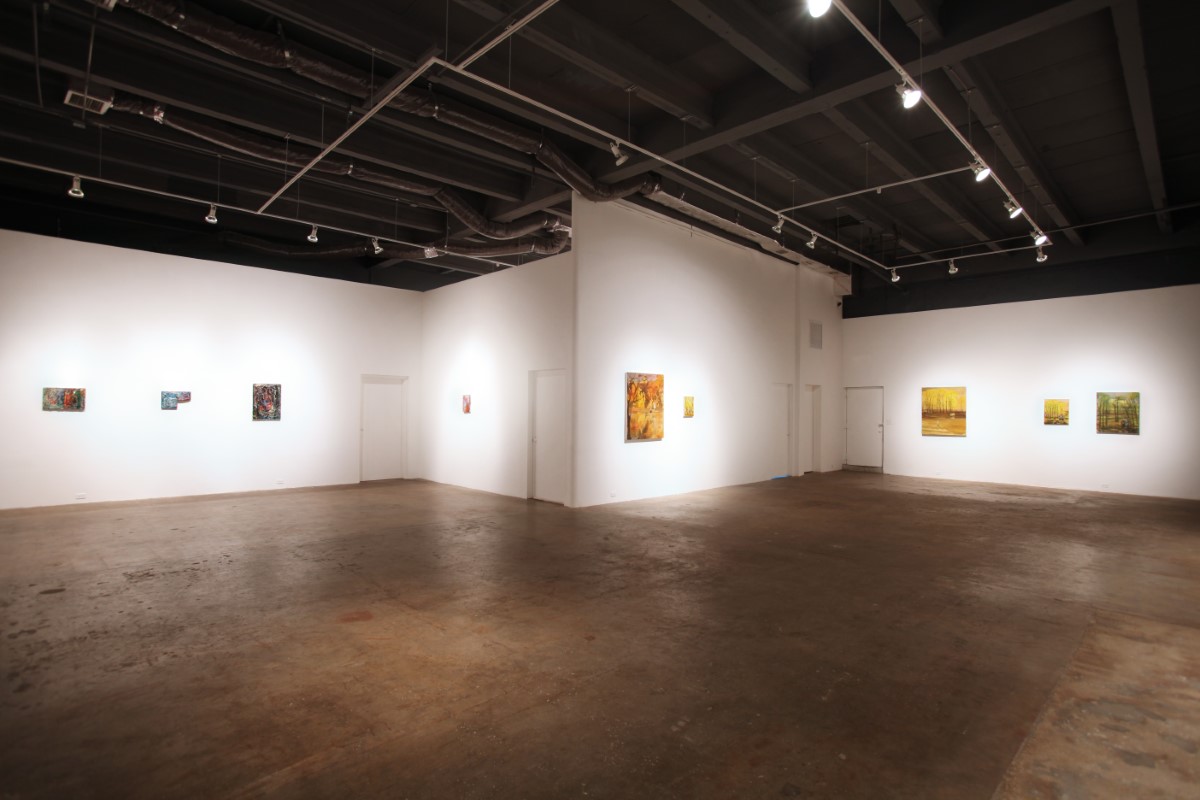Picaresque
Harumi Abe, Vera Iliatova and Yui Kugimiya
David Castillo Gallery is pleased to present Picaresque with works by Harumi Abe, Vera Iliatova and Yui Kugimiya.
Abe, Iliatova and Kugimiya use oil on canvas to elucidate home as a perpetual maturation of daseinrelative to the human body and its environment. Home is not a haven but a hermeneutics of suspicion ripe for deconstruction and contradiction. The motility of being-at-home is picaresque.Abe, Iliatova and Kugimiya striate the trope of the road of life into an episodic journey of thephenomenological anti-hero. In the tradition of Mary Cassatt’s domestic scenes, the picaresque home is expressive yet unsentimental, real yet nonessential. The picaresque home is an evolutionary resting posture consistent only in its appetite for line, color and texture.
Harumi Abe is at home under a Panopticon whose sphere of influence matches global proportions, breeching culture and infrastructure. Abe’s paintings permit a poetics of space that Bachelard describes as nothing less than a cosmos, or nothing more than the house as man’s first universe. Abe is comfortable with skeuomorphic objects that abandon the concept of the fixed original. Her roads become bridges appearing to lift off the terrain of linear destination. Her clouds appear to escape from the sea. She situates her man-made structures between the parentheses of landscape where they may know the proximity of destruction and Derridean deconstruction, the vulnerability of architecture in the elements, and the power of windows that are eyes in the soul.
Vera Iliatova weaves the epistemic body into the half-light of her canvas. It is a loose narrative fabric that holds her oils while breathing between time that is neither dawn nor dusk, figures that are neither children nor adults, and performance that is neither play nor ritual. Iliatova’s eyelet canvas sees the contradiction of privacy afforded by public space, the curious ubiquity of urban parks where girls gather and separate like the perpetual coming of age of an autopoietic organism. Iliatova calcifies the isomorphism between girl and tree, limbs and branches. She enunciates valence in embodiment and locative space like gems set into a bracelet. Iliatova’s figures are both rarified and machinic. They are of the spontaneous earth and the curated plane. What came first, the jewelry or the wrist? The embrace or the body? The sensation or the touch? Exposed to natural elements and the artificial inference of the free-ranging city, Iliatova’s figures open to the only constant of dynamism. They are one another’s zeitgeists in T. J. Clark’s terrain vague. They are nuclear in their simple affects of creation and destruction.
Yui Kugimiya takes elemental temperatures by hand. Earth, wind, fire and water vibrate atnormothermia. The guiding hand is a procedural gesture through hot and Icy Flame and throughMorning Evening. Like her application of oil paint, accumulated to sculptural terrain that will remain wet for years, Kugimiya informs contemporaneity with an immutability that gives way to disappearance and emergence. Home is not an absolute, but an autocade of leaks. Kugimiya pursues a home for the human body, which is mostly water bifurcated by the current climate of events such as Wikileaks and the tsunamis of global climate change. The materiality of Kugimiya’s paintings is at home in the baroque morphology of sublimity and catastrophe.
Abe, Iliatova and Kugimiya locate picaresque being-at-home at its most powerful groundswells. To be at home is a political act that embraces inertia without direction or destination. Like the traveler in Robert Frost’s “Stopping By Woods on a Snowy Evening,” Picaresque renders momentary equilibrium. Using figurative and natural imagery, Abe, Iliatova and Kugimiya gesture toward homemaking as a subjective extension of the nervous system reaching beyond the fingertips down into the earth, up into the sky and across hills and forests. The artists in Picaresque render home at the material, cellular and experiential levels. Their being-at-home wills paint toward canvas, the body toward resilience and the traveler toward her next intermissive rest.
Harumi Abe lives and works in Hollywood, Florida and has been the recipient of prestigious awards and residencies such as the South Florida Cultural Consortium, Vermont Studio Residency; and holds an MFA from Florida International University. Vera Iliatova lives and works in Brooklyn, NY and received her MFA from Yale University. The artist has exhibited extensively and has had her work reviewed in many important publications including the New York Times. Also living and working in Brooklyn, NY and holding an MFA from Yale University, Yui Kugimiya has exhibited internationally and has participated in significant residencies such as the Skowhegan School of Painting and Sculpture. Among the collections the artist’s work is in, is the Museum of Modern Art, New York.
Harumi Abe, Vera Iliatova and Yui Kugimiya





